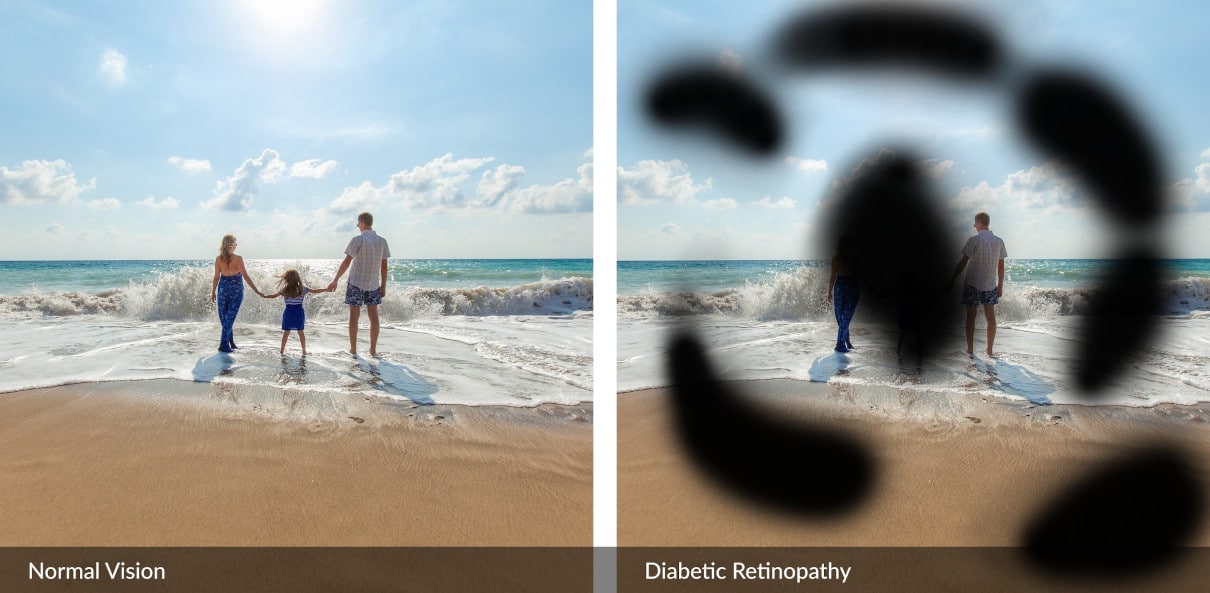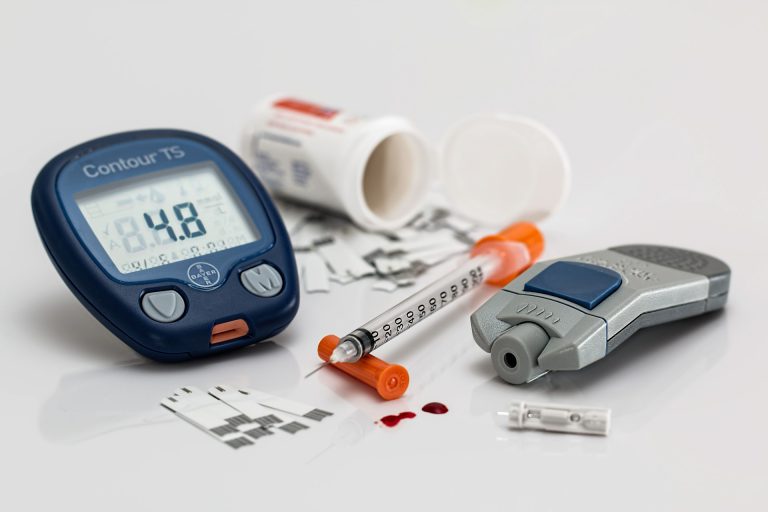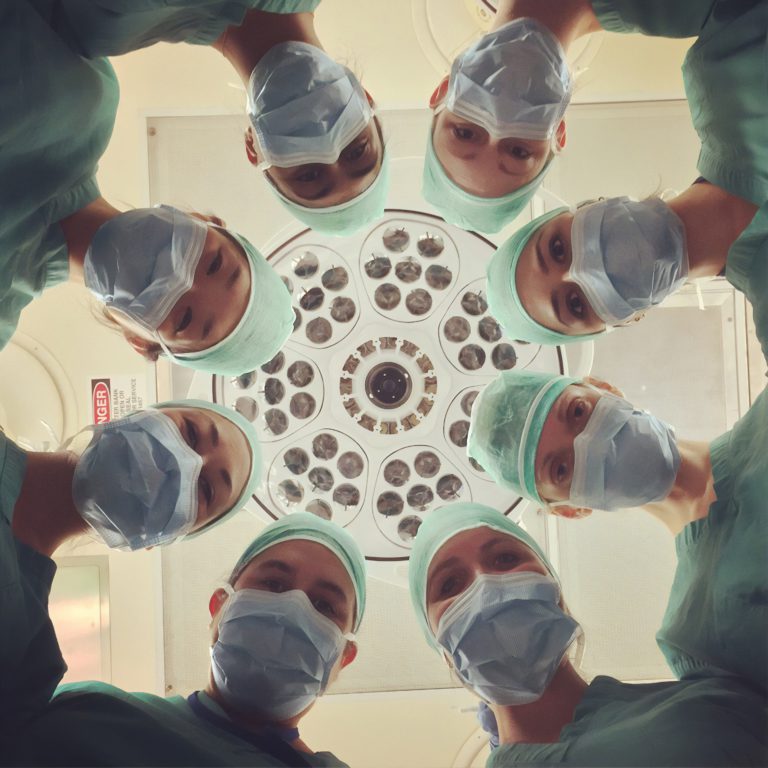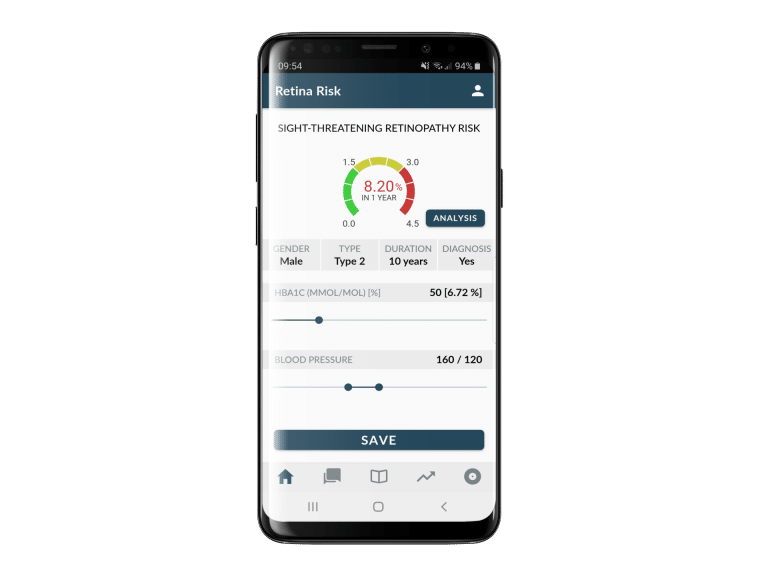How To Prevent Diabetic Retinopathy?
Diabetic retinopathy is one of the most common complications of diabetes. It’s an eye condition that affects blood vessels in the retina, the innermost layer lining the back of the inside the eye. It occurs due to damage to the small capillaries that supply blood to the light-sensitive retina at the back of the eye. If glucose levels remain high in the blood over a sustained period of time, the blood vessels suffer damage.
Most patients with diabetic retinopathy do not develop any symptoms initially. However, if left undiagnosed, diabetic retinopathy may result in vision loss and even blindness. As we have covered in our previous blogs, diabetic retinopathy is in fact one of the leading causes of blindness in the world today.
The good news is that in most cases vision loss due to diabetes can be prevented with early detection and timely treatment. The significance of regular eye checks can’t be overstated.
It is therefore important to be aware of the various ways to prevent diabetic retinopathy. Here are several tips that can help you prevent the development of diabetic retinopathy and minimize your risk of complications, including vision loss.
Good diabetes care to prevent diabetic retinopathy
Good control of blood glucose and blood pressure greatly reduces the risk of sight-threatening diabetic retinopathy. These should be regularly monitored.
In previous blogs we covered various methods to monitor glucose levels, including continuous glucose monitoring devices but also emerging technologies like using saliva as a pain-free and cheaper alternative to blood for monitoring diabetes, measuring glucose in your tears and using a smart-patch.
It is also important to regularly check your hemoglobin A1C (glycosylated hemoglobin) levels which indicates your average blood glucose levels during the last two to three months. Here you can read more about what HbA1c measures.
Make sure to take your medications
The regular use of oral anti-diabetic drugs or insulin injections, as recommended by your physician, is essential for controlling diabetes. This will help you maintain your blood sugar levels within normal limits and minimize the risk of damage to the retina .
There are various types of drugs that can help in different ways to lower your blood sugar. Your doctor may prescribe a combination of medications or one medication may be enough. If you have type 1 diabetes you will need insulin and possibly drugs to keep your blood pressure under control. For people with type 2 diabetes, the doctor may prescribe insulin when needed or metformin or other non-insulin medications to help control blood sugar levels.
Healthy eating is vital
Adopting healthy dietary habits is the key to good diabetes care and prevention of diabetes complications like diabetic retinopathy. Limit your intake of foods containing simple sugars such as cakes, chocolates and pastries in order to maintain normal blood sugar levels to prevent retinopathy.
On the other hand, increase your consumption of foods rich in dietary fibers such as vegetables, legume and whole grains to improve glycemic control. Foods rich in fibers help to maintain normal blood sugar levels thus preventing the risk of retinopathy.

Unhealthy fats like trans fats and saturated fats can contribute to inflammation in the body’s tissues thus worsening insulin resistance. It may put you at a higher risk of complications like retinopathy. Hence, it is advisable to avoid the intake of unhealthy fats. Instead, consume foods containing healthy fats like monounsaturated and polyunsaturated fatty acids like olives, avocado, almonds, and fish. Also try to limit the amount of salt as too much of it can raise your blood pressure.
In a previous blog, we’ve covered some of the trending diets for people living with diabetes. Focus on fruits and vegetables, along with lean meats and plant-based source of protein, seem to be common elements in many of them. The emphasis is also on less processed foods and less added sugar.
Check your cholesterol levels
The risk of diabetic retinopathy is directly linked to the presence of increased cholesterol levels. Many connect cholesterol with it clogging up our arteries and contributing to long-term health problems. This is what the LDL (bad) cholesterol does. Healthy levels of HDL (good) cholesterol on the other hand, are vital for our cells to function.
Researchers have found that there´s a relation between blood sugar, insulin and cholesterol levels. But they´re not yet clear on the exact nature of how diabetes and high cholesterol levels are related. What seems to be clear is that even if you maintain good blood sugar levels, your LDL (bad) cholesterol levels may still go up. Both can though be controlled with medications and good lifestyle habits.
Therefore make sure to monitor your cholesterol levels regularly and ensure your lipid levels are within normal limits in order to protect yourself against the risk of diabetic retinopathy.
Engage in physical activities
Making regular physical activities a part of your routine can improve your fitness and enhance glycemic control. It also increases the calorie utilization by your body and prevents spikes in blood sugar levels. All of this helps to prevent diabetic retinopathy.

Simple activities like walking, running, cycling, and swimming for at least 30 to 40 minutes every day helps to avoid diabetic complications. Read here our previous blog about how high intensity interval training can help to maintain good blood sugar levelsl.
Maintaining a normal body weight by following healthy dietary habits and regular exercise will keep your diabetes in control and prevent the development of diabetic retinopathy. Weight loss involves the faster burning of fats. It can help to protect the body’s tissues against inflammation and improve insulin sensitivity. It enables insulin to enter cells and support the metabolism of sugars allowing your body to maintain normal blood glucose levels.
Be aware of hypertension
Diabetes and hypertension often go hand in hand. It seems that having hypertension increases the risk of type 2 diabetes, and having type 2 diabetes has been known to increase the risk of hypertension.
The risk of diabetic retinopathy is higher in patients who suffer from both diabetes and hypertension. Hence, it is advisable to monitor your blood pressure at regular intervals and seek appropriate treatment in case you are diagnosed with hypertension.
A sharp rise in blood pressure can cause damage to the retina and contribute to the risk of developing retinopathy. The risk of diabetic eye disease is in fact much higher in patients who suffer from both diabetes and hypertension.
Quit smoking
Smoking can worsen the damage to the retina by triggering inflammation resulting in diabetic retinopathy. Hence, it is advisable to avoid smoking, both active and passive, to protect yourself against this condition.
Stay away from alcohol
Alcohol consumption is linked with a higher tendency to develop fluctuations in blood sugar levels. Moderate amounts of alcohol may cause a rise in blood sugar levels. Excess alcohol can actually cause your blood sugar level to drop to dangerous levels, especially for people with type 1 diabetes.
As alcohol can have this impact on your glycemic control and even cause disruptions in the secretion of insulin, it is advisable to curb your intake of alcohol in order to prevent diabetic retinopathy.
Avoid stress
As we´ve have covered in previous blogs, stress can make it more difficult to control your diabetes. It may throw off your daily routine and can result in wear and tear on your body.
Research has shown that diabetic patients with comorbid depression are at greater risk of developing diabetic retinopathy. Improving depression treatment in patients with diabetes could contribute to diabetic retinopathy prevention.
Adopting stress-relieving techniques like yoga, meditation, or something as simple as watching your favorite television shows is recommended to relieve stress and avoid diabetic complications.
Have your eyes checked on a regular basis
It´s recommended that people with diabetes have their eyes checked regularly. Such eye exams are critical for early detection and timely treatement of diabetic retinopathy. Systematic monitoring of your eyes’ health allows your ophthalmologist to begin treatment as soon as possible if signs of disease do appear.
Researchers have found that in some cases more than half of diabetic patients skip regular eye examinations. As vision loss can be prevented in the majority of cases with early detection it is vital to raise awareness and ensure that people with diabetes understand the importance of regular eye exams.

Here´s where the RetinaRisk app can be instrumental. It raises awareness and empowers people to calculate their individualized risk of developing sight-threatening diabetic retinopathy. It allows people to better understand their condition and motivates them towards enhanced diabetes care. With the possibility to log previous and upcoming eye screening appointments, users can be sure to never miss again sight-saving eye examination.
Conclusion
Monitoring blood sugar levels and controlling your diabetes through healthy dietary and lifestyle habits are the keys to preventing the development of diabetic retinopathy and protecting yourself against complications like vision loss and blindness.
If you experience any change in the vision or develop symptoms like blurring of vision, contact your physician or ophthalmologist at the earliest. These could be the early warning signs of diabetic retinopathy. Timely detection and treatment would help you avoid worsening of the condition and prevent vision loss.









